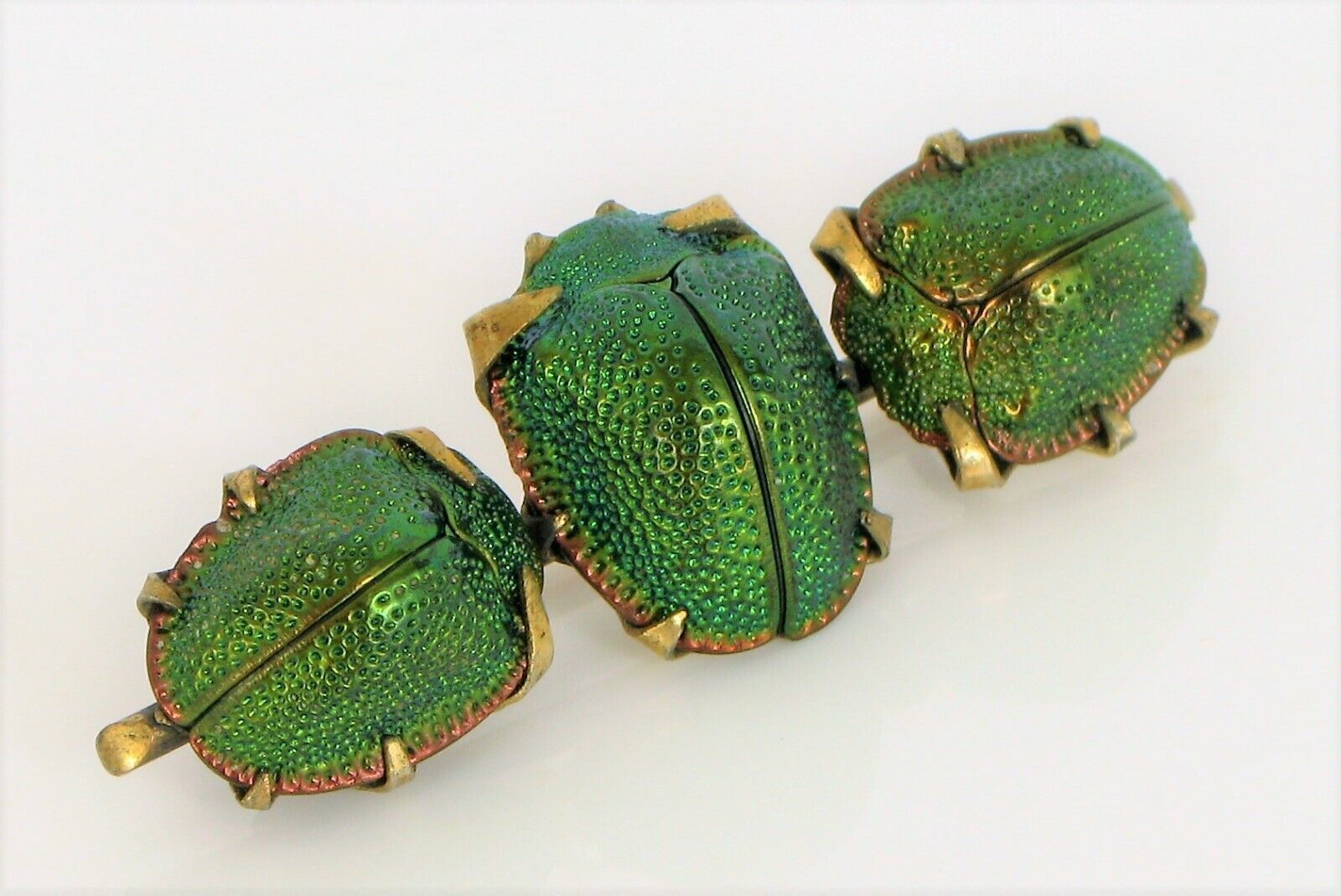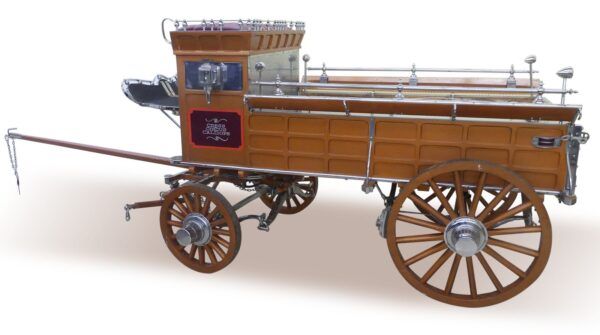#Creepy #Jewelry #Real #Insects #WorthPoint
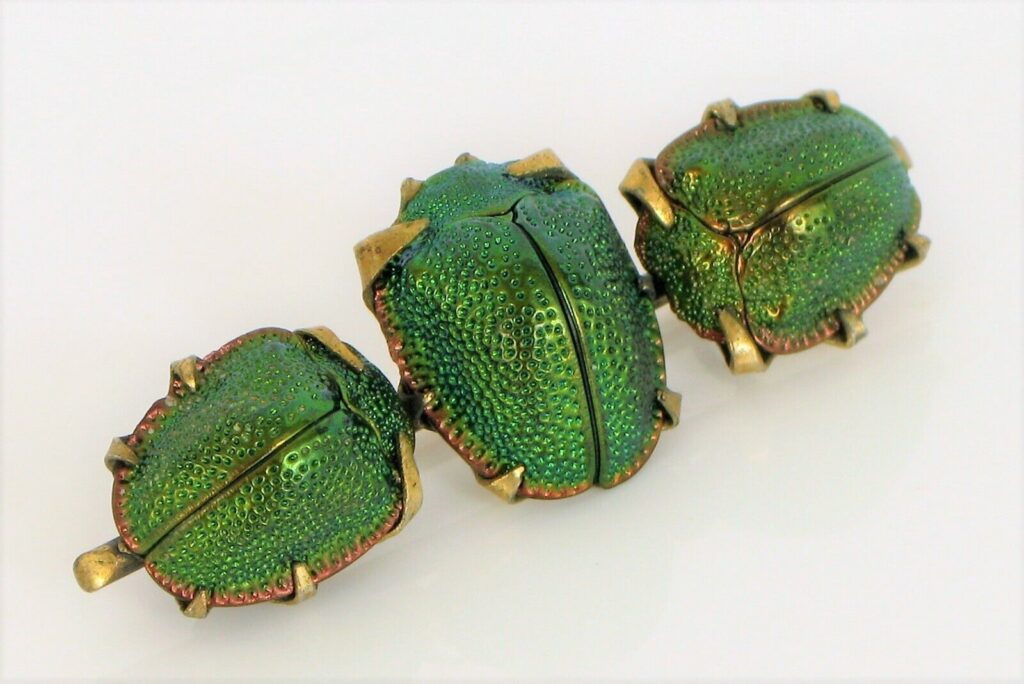
Jewelry in the form of insects has been around for millennia. Some of the most famous are imitations of scarab beetles, also known as dung beetles, that the Egyptians fashioned into amulets. Revivals of those pieces have been made and worn repeatedly since then, along with the imitations of other insects like bees and dragonflies. But did you know that jewelry crafted with real insects is also a thing? And I’m not talking about the occasional tiny ancient insect encased in Baltic amber; some are large, full-bodied bugs complete with antennae.
If the thought makes your skin crawl, you’re definitely not alone. Many people, including myself, find this type of jewelry creepy, if not downright revolting. It’s something I’d never wear, and if I had a chance to buy a piece for a song, it would go in the “for sale” pile pronto. Nevertheless, many people find it fascinating, and some of these designs can be quite valuable, so it’s still a topic worthy of exploration.
Victorian Insect Jewelry
The Victorians were definitely in touch with nature—sometimes too much in touch, if you ask me. I’m referring to the fashionable practice of wearing dead insects strung together as necklaces and bracelets. They were also used individually to make dangling earrings and stickpins that men could wear on lapels. They did this with various insects, but the most often found today are scarab-type beetles with bright green hues and iridescent sheens. They’re sometimes mistaken for some type of stone, and if that’s what they were, they’d actually be kind of pretty.
Pieces of jewelry made with bugs are also some of the most valuable authentic insect pieces when they date to the late 1800s. They’re rare finds and can bring hundreds or even thousands depending on how many bugs are used in the design. You can find more reasonably priced stickpins and some earrings, especially revival pieces from the first half of the 20th century, if you’re in the market.
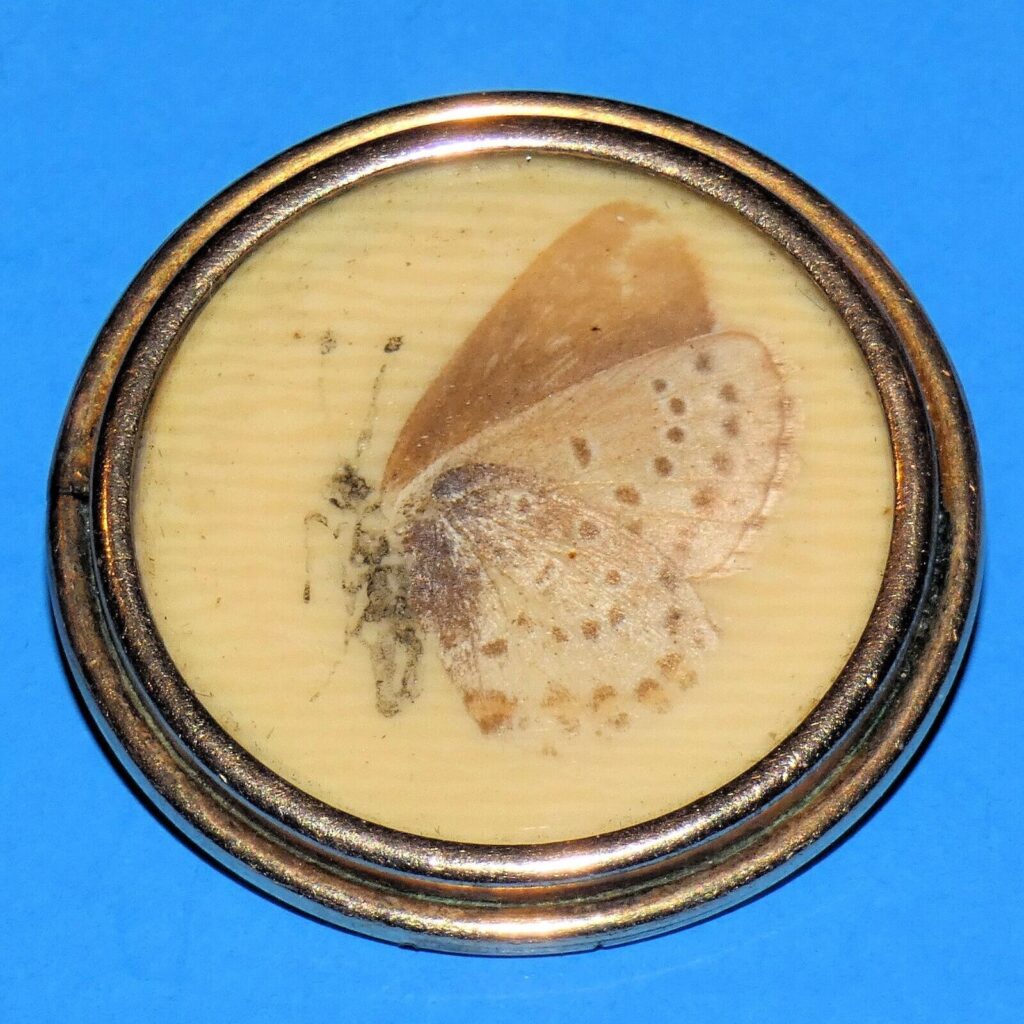
Insects Incased in Plastic
By the 1960s and ’70s, whole dead insects were encased in clear or colored plastic. I first became aware of this type of jewelry at a collector’s convention decades ago, where some bangle bracelets of this type were being sold, much to my vexation. Someone I knew liked them and bought one while I shunned her selection. They used to be quite affordable but can top $100 these days.
Since that first sighting, I’ve also run across bees encased in Lucite cabochons in the form of earrings, rings, and sweater guards. I’ve also seen scorpions within Lucite pendants at lower price points. Still, all I can say to any of these is, “no thanks.”

Pressed Insect Jewelry
Many people collect sterling silver jewelry crafted from the wings of morpho butterflies. And honestly, I don’t find these pieces to be as cringe-worthy as other types of insect jewelry. These were primarily sold as souvenirs in England beginning in the 1920s, and there is something about the blue color and kitschy silhouette décor I find a bit endearing.
Occasionally, collectors run across full-pressed butterflies or moths under glass in pins or pendants that are even older. Think about how flowers have been pressed and preserved under glass, and you’ll get the picture. Some of them have morpho wings for a backdrop. Maybe because they’re older and the damage was done long ago, these vintage and antique jewelry pieces fall into an acceptable area for me.
Newer earrings and brooches with other types of butterfly wings encased in plastic have also been sold in the 2010s. However, it’s just a bit too much to pluck the wings from a butterfly to make modern jewelry, so I can live without those.
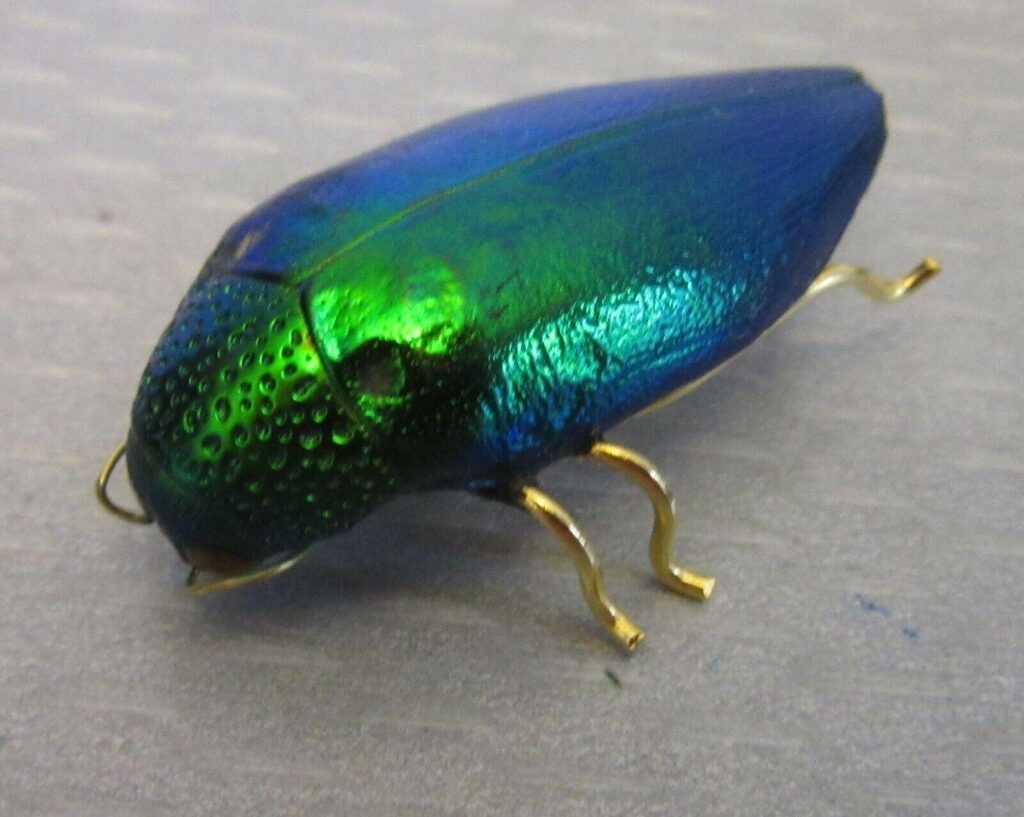
Jewelry Made with Live Insects
I probably shouldn’t go there, given that I’m creeped out enough by most of the dead insect jewelry offered to collectors, but jewelry made with live insects was reported in the late 1800s, too. One of these sightings was mentioned in Entomological News, where a woman named Mrs. De Jones donned an “innovation” that apparently caused a stir, and with good reason!
“It was a great jewel Mrs. De Jones had on last night. What was it? It was a live Brazilian beetle with a big diamond strapped on its back. It was trained to fly around her neck, thus giving the effect of a diamond necklace.” Fireflies were used as glowing hair jewelry, and Mexican beetles were attached to chains so they could crawl around as living brooches during the period as well.
Now, a lot of jewelry worn by Victorians baffles the mind today, but modern versions of those beetle brooches were spotted again as “roach brooches” in the early 2000s. Maquech beetles, again from Mexico, were decorated with faux gems to make these little pets, if you will. I’m still left wondering who would wear such as this (as my mother would have said), but when shock and awe are the goal in donning jewelry, I think we have a winner.
So, that’s my overview of some of the jewelry made with insects, both dead and alive. By this point, I know I’ve either repulsed you, fascinated you, or maybe even delighted you if you’re into weird curiosities, but there you have it either way.
Pamela Siegel is a freelance writer and author who has been educating collectors for more than two decades. In addition to three books on topics relating to antiques and collectibles, she frequently shares her expertise through online writing and articles for print-based publications. Pamela is also the co-founder of Costume Jewelry Collectors Int’l (CJCI) and the proprietor of Chic Antiques by Pamela.
WorthPoint—Discover. Value. Preserve.

